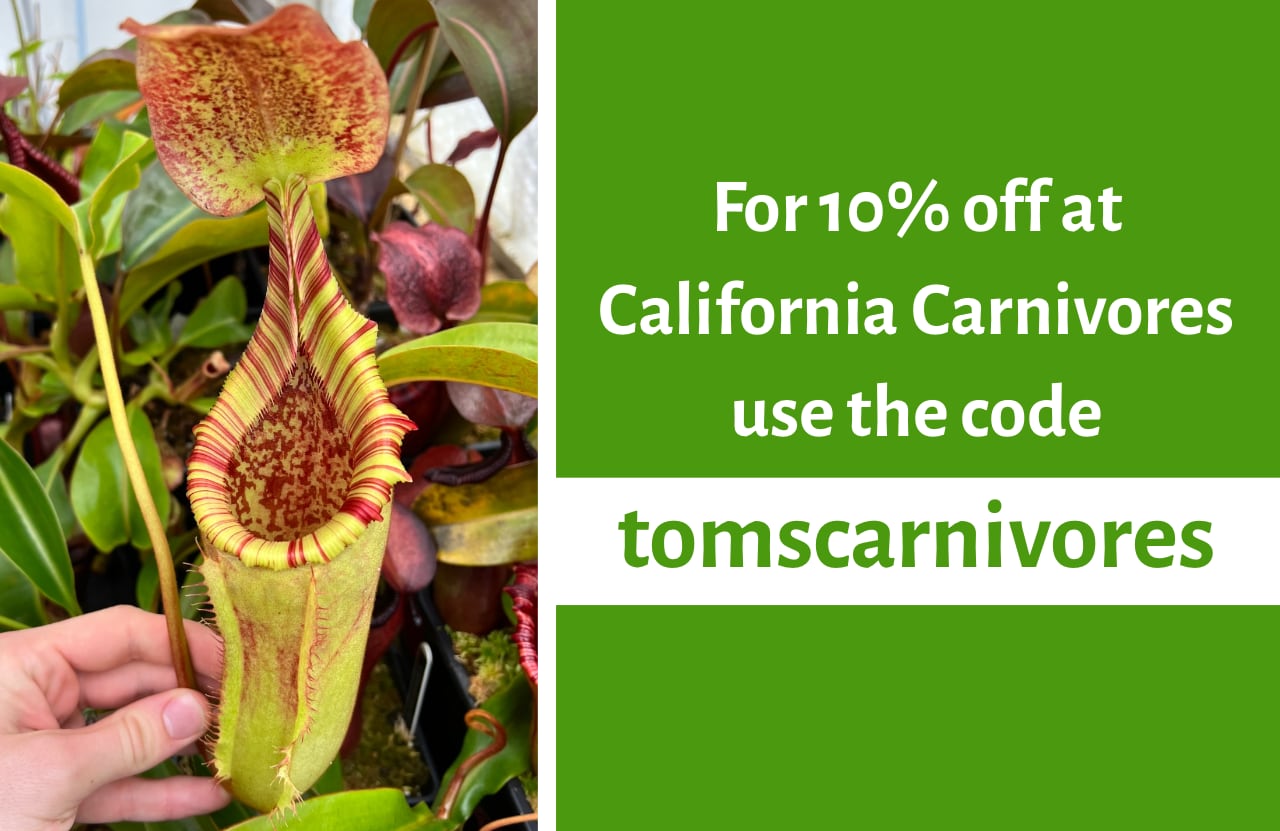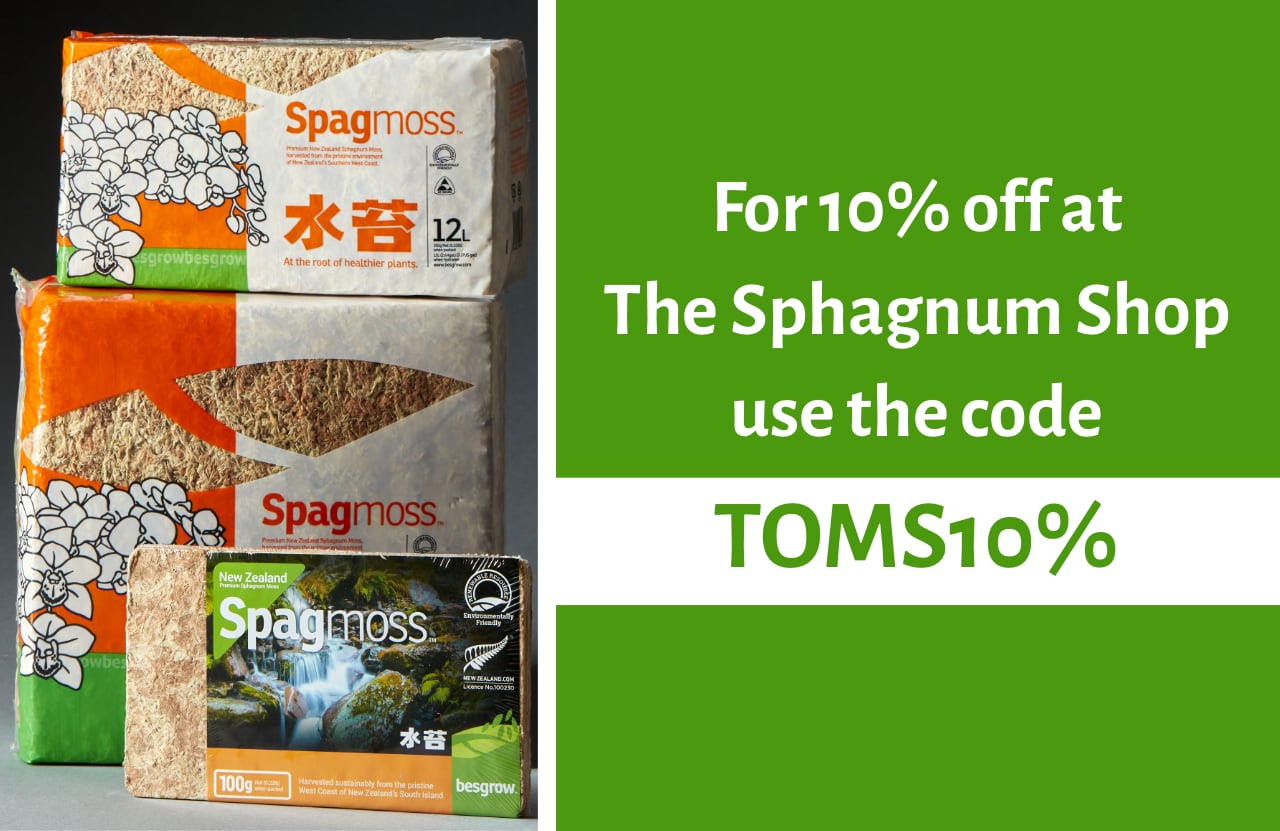Nepenthes robcantleyi
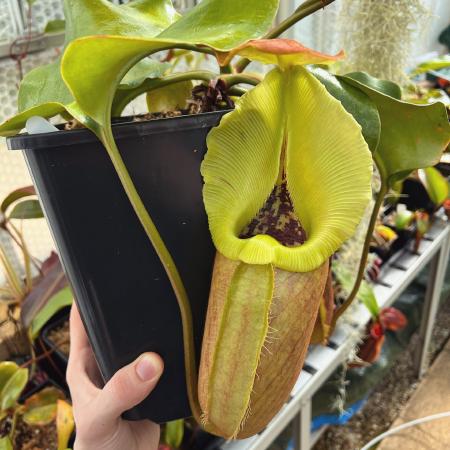 Huge pitcher on N. robcantleyi (BE-3517)
Huge pitcher on N. robcantleyi (BE-3517)
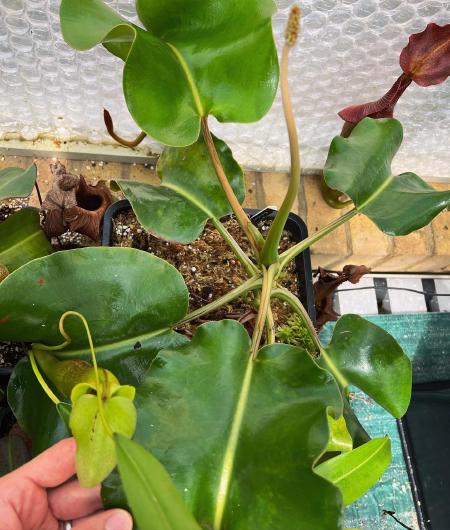 Emerging female inflorescence - this grew to be nearly 2 metres tall
Emerging female inflorescence - this grew to be nearly 2 metres tall
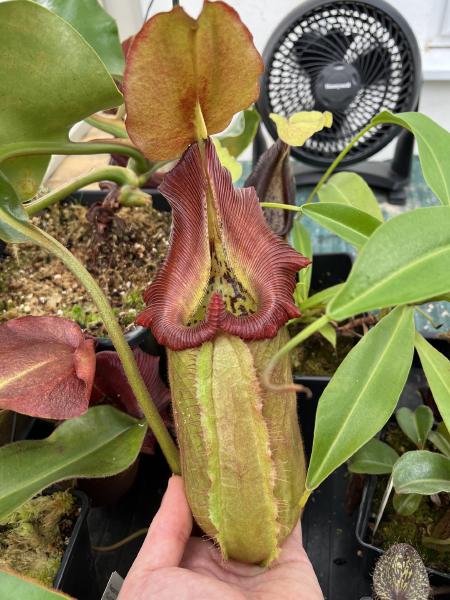 The peristome darkens to red and folds back, as can be seen here
The peristome darkens to red and folds back, as can be seen here
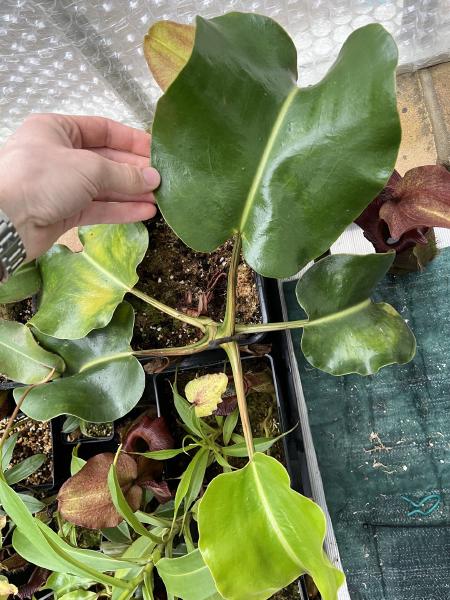 Large, round, truncata-like leaves.
Large, round, truncata-like leaves.
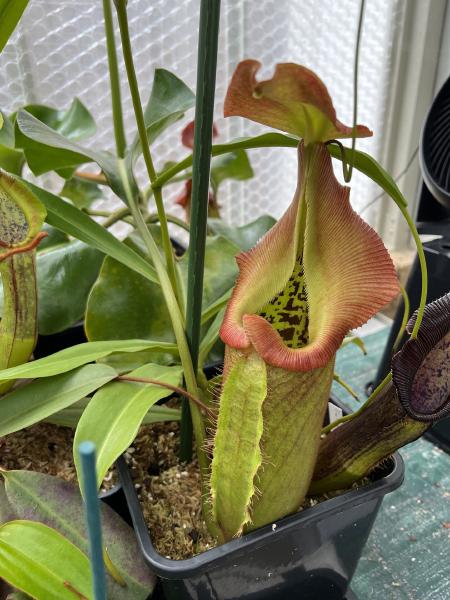 This is my favourite stage - the edges of the peristome are red, but the inner remains yellow, for a sunburst effect
This is my favourite stage - the edges of the peristome are red, but the inner remains yellow, for a sunburst effect
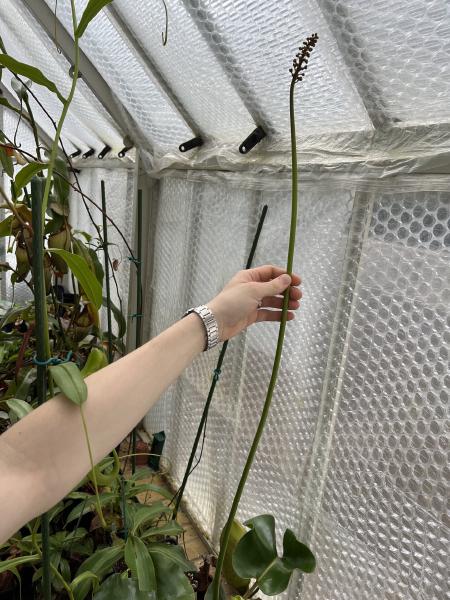 Huge flower stalk that's still got a while to grow before becoming receptive!
Huge flower stalk that's still got a while to grow before becoming receptive!
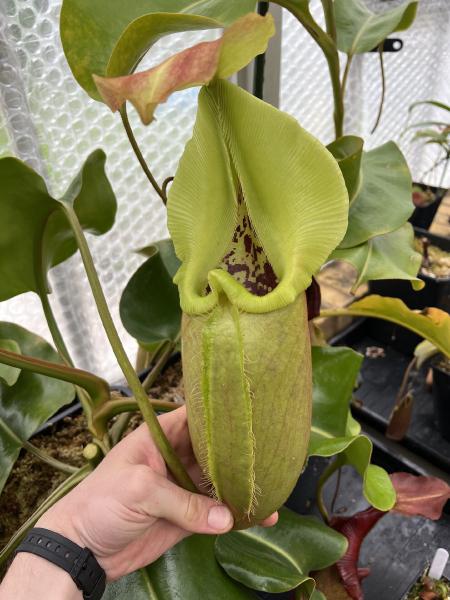 Solitary stripes are occasionally visible before the peristome darkens, but not always
Solitary stripes are occasionally visible before the peristome darkens, but not always
Description & Care
N. robcantleyi is one of my all-time favourite “species”. I use inverted commas because this plant is the subject of a heated taxonomical row about its status as a species. Participants have penned both scientific papers and Facebook screeds, and there’s no shortage of strongly-held opinions!
I’ll try to summarise the debate as of 2023. Before I start, if you’re sufficiently invested in this row to find the very name N. robcantleyi distressing, don’t fret: I’ve got your back. Just hit the ‘Triggered’ button above, and this will become a safe space.
The species was originally described in 2011 by Martin Cheek, but the story of N. robcantleyi actually starts back in 1997. Robert Cantley - owner of Borneo Exotics - was exploring a remote mountain on the island of Mindanao in the Philippines, in search of Nepenthes truncata seeds. Alongside some typical N. truncata, he found two individuals of an apparently new species. One of these had an inflorescence with just a few seeds remaining in its pods - Cantley collected these and successfully germinated 11 plants. Six remained at Borneo Exotics, including the individuals that would become known as ‘Queen of Hearts’ and ‘King of Spades’. All of BE’s commercial releases of N. robcantleyi arise from the crossing of these two plants.
In 2017, Geoff Mansell of Exotica Plants and Wally Suarez published an article in the Carnivorous Plant Newsletter called N. robcantleyi: A natural hybrid. They argue that the varying morphology of the second generation (F2) of N. robcantleyi offspring point to a hybrid origin of the grex which yielded the original 11 plants. They suggest a cross between N. truncata and N. nebularum (a more recently described highland Nepenthes), or a complex hybrid involving these species. The original population in Mindanao is thought to be extinct, having been cleared for logging shortly after the original seeds were collected, so further observations in the wild are unlikely to yield any answers.
My take? I have no idea 🙂 I grow N. truncata, N. nebularum, and N. robcantleyi, but have only flowered the latter. I also have only one or two individuals of each species, so am not sufficiently familiar with the variation to pass comment with any confidence. I will say, though, that there seem to be plenty of other ‘species’ that are equally deserving of this level of scrutiny and taxonomic reevaluation - N. ephippiata ‘Hose Mountains’, perhaps? Either way, it’s a nice plant to grow.
In terms of cultivation, I’ve found N. robcantleyi to be an easy highland grower. I’m aware that many growers have had other experiences - Gianne of Nepenthes Diary reports hers being very picky about overwatering or fluctuations in temperature and humidity. Mine definitely doesn’t like overwatering, but other than that, it’s been fairly easy going and recently flowered female. It has huge long-lasting pitchers and big round leathery leaves, and benefits from regular feeding. A must for any collection!
How I Grow It
| Media | Long fibre sphagnum moss, perlite, and - optionally - orchid bark (2:1:1) |
|---|---|
| Water | Seems more sensitive to overwatering than many other highlanders. Keep damp but never wet. |
| Light | Many growers report the leaves burn easily with too much light, but I've never had this problem. |
| Fertilizer | This species can take a lot! I fertilise pitchers heavily with Maxsea. |
| Temperature | 12°C (54°F) minimum year-round, with summer highs of ~ 30°C (86°F) |
| Humidity | 70% during the day, rising to over 90% at night |
Learn more about cultivation with my guide to growing Nepenthes.
Day & Night Temperatures
Nepenthes robcantleyi is a highland species, found at elevations of between 1750 and 1850 meters. This range is highlighted in orange above, and equates to temperatures of approximately 23 - 26°C (73 - 79°F) during the day, and 13 - 16°C (55 - 61°F) at night.
Habitat
| Native to | Philippines |
|---|---|
| IUCN Red List status | Critically Endangered (may be extinct in the wild) |
| Natural hybrids | None known |
Where to Buy
| Availability | Tissue cultured plants available from BE, but always in high demand. |
|---|---|
| Borneo Exotics codes |
|
